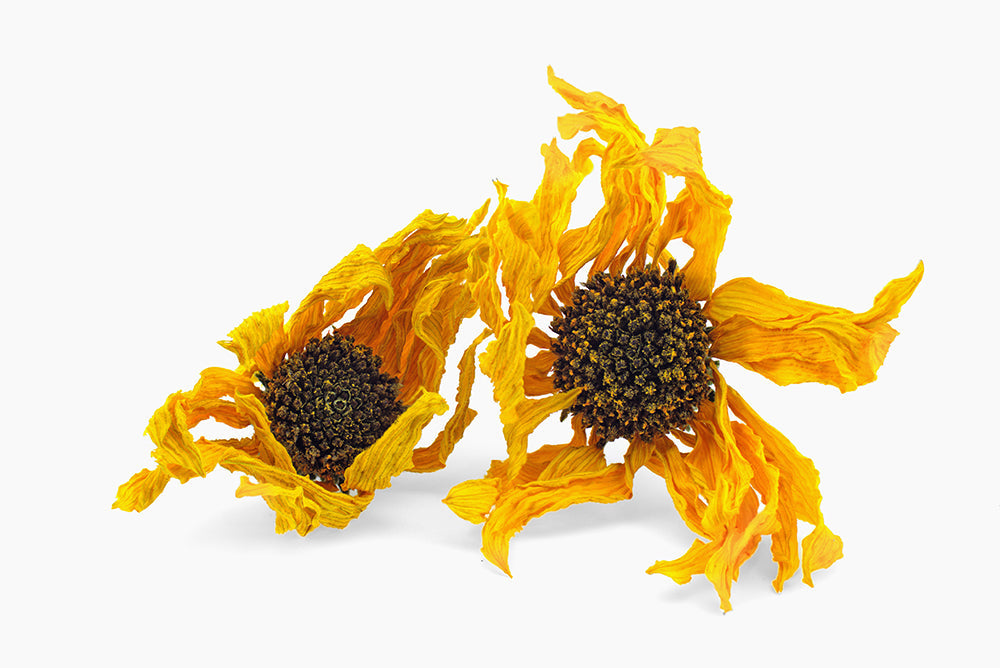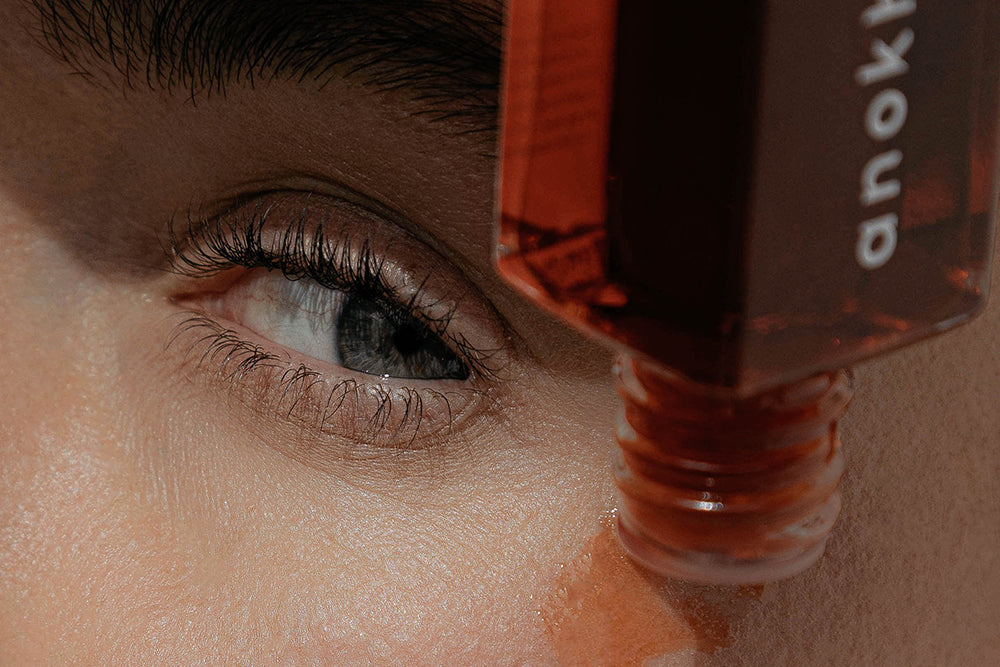
ingredient focus: arnica

the bottom line
It’s used before and after surgery to improve wound healing, limit bleeding and swelling, and reduce pain. But does arnica really have the science to back these claims? We dive into the medical literature to assess this homeopathic ingredient beloved by plastic surgeons worldwide.
first layer: the history
Arnica, one of the world’s most popular homeopathic medications, is native to high altitudes of the Siberian mountains, northern Asia, and Central Europe. It’s been used throughout history for the treatment of various conditions, including pain, swelling, bruising, sprains, and arthralgias,* and has been reported to possess antibacterial, anti-tumor, antioxidant, anti-inflammatory, antifungal, and immunomodulatory activity.
Arnica can be extracted from several plant species in the Asteraceae family including Arnica montana, Arnica chamissonis, Arnica fulgens, Arnica cordifolia, and Arnica sororia. Arnica montana is one of the most common varieties, and has some cute nicknames, including leopard’s bane, wolf’s bane, mountain tobacco, and (our personal favorite) – mountain snuff. It’s readily available in various forms such as tincture, ointment, cream, gel, or tablet.
second layer: the science
150 therapeutically active substances are present within the Arnica montana plant, and each part of the Arnica montana plant contains different constituents. The most active components of arnica are the sesquiterpene* lactones which include helenalin and 11alpha,13-dihydrohelenalin. Sesquiterpene lactones have demonstrated anti-inflammatory and cytotoxic activity.
The flower is the most nutrient-rich part of the plant, and includes flavonoids*, sesquiterpenes, and essential oil. The quantity of sesquiterpene lactones increases with the maturity of the dry flowers. The nature and amount of phytochemicals present within the flower heads will also vary according to the climate and altitude. Flowers collected from higher altitudes contain primarily helenalin, while those from lower altitudes contain more dihydrohelenalin esters.
The seeds contain primarily phenolic acids and flavonoids as its active constituents, while the roots of Arnica montana contain primarily aromatic compounds including thymol which is used as an antioxidant and antifungal.
Helenalin, one of the most active components of arnica, has been shown to inhibit or reduce multiple factors involved in the inflammatory pathway, including nuclear factor kappa B (NF-kappaB)*, nitric oxide*, nitric oxide synthase, cyclooxygenase-2 (COX-2)*, and tumor necrosis factor alpha (TNF-alpha)*, interleukin-1 (IL-1)*, 5-lipoxygenase*, and leukotriene C4* synthase.
third layer: the clinical applications
Arnica montana has been shown to exhibit significant anti-inflammatory, antioxidant, antibacterial, antifungal, antiplatelet, and immunomodulatory activity. However, the results of studies performed to evaluate the efficacy of arnica vary widely secondary to a lack standardization of arnica dosages and preparations. Because this ingredient is not standardized by the Food and Drug Administration (FDA) in the United States, different strengths of arnica have been used across studies. In some cases, the floral extract has been used, while in others the roots or leaves have been studied. Some studies evaluate topical use, while others have incorporated oral tinctures into the test regimens. Still other studies have used arnica in conjunction with another herbal ingredient, which renders any conclusions about arnica alone invalid. However, a small number of well-designed studies do show positive results. The primary end-results that have been investigated include the improvement of wound healing, decreased bruising and swelling, and a reduction of pain.
anti-inflammatory: A randomized study of 204 patients with arthritis of the hands used topical application of arnica for three weeks. The authors found that arnica had similar efficacy to ibuprofen in reducing pain, the number of painful joints in both hands, and the intensity of morning stiffness in the most affected hand.
antioxidant: Extract of Arnica montana has shown significant antioxidant activity which is attributed to its flavonoids and phenolic compounds.
antimicrobial: Arnica montana has demonstrated antimicrobial activity against Streptococcus species. As noted previously, the thymol derivatives from the roots have specifically shown antimicrobial and antifungal activity.
antiplatelet: arnica can act as an anticoagulant as a result of its sesquiterpene lactones, helenalin and 11alpha-13-dihydrohelenalin, which react with platelet sulfhydryl groups to inhibit the formation of thromboxane*, secretion of 5-hydroxytryptamine* (5-HT), and platelet aggregation. Two studies have evaluated the use of oral arnica following rhinoplasty (nasal plastic surgery). Both studies showed a decrease in the level of bruising. A meta-analysis of placebo-controlled (indicating that arnica was compared to a substance without effects) and direct comparison trials showed that arnica does have a small effect when compared to placebo in preventing excessive hematoma and other surgical side effects, and that this effect is comparable to that of anti-inflammatory substances. As a result, it may act as a reasonable alternative to these medications.
immunomodulatory: a polysaccharide fraction of the flowers has been shown to be immunostimulating by increasing phagocytosis* by granulocytes*.
fourth layer: how we do it
we’ve incorporated arnica into our rosehip replenishing balm, a gentle salve created for Dr. Naidu’s patients to use on their incisions following surgery. This glossy body balm boasts a mélange of mango butter and highly soothing botanical oils and extracts including olive, rosehip, sea buckthorn, gotu kola, and argan. It’s a beauty balm for targeted renewal.
All this and more at www.anokhaskincare.com .
xx
anokha
references:
- Knackstedt R, Gatherwright J. Perioperative homeopathic arnica and bromelain: Current results and future directions. Ann Plast Surg 2020; 84(3): e10-e15.
- Chaiet SR, Marcus BC. Perioperative Arnica montana for reduction of ecchymosis in rhinoplasty surgery. Ann Plast Surg 2016; 76: 477-482.
- Tontochi A, Guyuron B. A randomized, controlled comparison between arnica and steroids in the management of postrhinoplasty ecchymosis and edema. Plast Reconstr Surg 2007; 120: 271-274.
- Gaertner K, Baumgartner S, Walach H. Is homeopathic Arnica effective for postoperative recovery? A meta-analysis of placebo-controlled and active comparator trials. Front Surg 2021; 8: article 680930.
- Lyss G, Schmidt TJ, Mefort I et al. Helenalin, an anti-inflammatory sesquiterpene lactone from Arnica, selectively inhibits transcription factor NF-kappaB. Biol Chem 1997; 378: 951-961.
- Iannitti T, Morales-Medina JC, Bellavite P, Rottigni V, Palmieri B : Effectiveness and safety of Arnica montana in post-surgical setting, pain and inflammation. Am J Ther 2016; 23: e184-e197.
- Verma N, Tripathi SK, Sahu D, et al. Evaluation of inhibitory activities of plant extracts on production of LPS-stimulated pro-inflammatory mediators in J774 murine macrophages. Mol Cell Biochem 2010; 336: 127-135.
- Widrig R, Suter A, Saller R, et al. Choosing between NSAID and arnica for topical treatment of hand osteoarthritis in a randomised, double-blind study. Rheumatol Int 2007; 27: 585-591.
- Kriplani P, Guarve K, Baghael US. Arnica montana L. – a plant of healing. J Pharm Pharmacol 2017; 69: 925-945.
- Petrova M. Biotechnological approaches for cultivation and enhancement of secondary metabolites in Arnica montana L. Acta Physiol Plant 2012; 123-133.
- Schroder H, Losche W, Strobach H et al. Helenalin and 11alpha13-dihydrohelenalin, two constituents from Arnica montana L., inhibit human platelet function via thiol-dependent pathway. Thromb Res 1990; 57: 839-845.
- Gawlik-Dziki U, Swieca M, Sugier D, Cichocka J. Seeds of Arnica montana and Arnica chamissonis as a potential source of natural antioxidants. Herba Polonica 2009; 55: 60-71.
- Pljevljakusic D, Rana D, Mihailo R, et al. Rhizome and root yield of the cultivated Arnica montana L., chemical composition and histochemical localization of essential oil. Ind Crops Prod 2012; 39: 177-189.
definitions:
arthralgias: painful, achy joints. also known as being in your 50’s.
cyclooxygenase (COX): an enzyme that helps create the chemical prostaglandin and thromboxane. prostaglandins help to create inflammation and thromboxane assists in blood clot formation. there are two types of COX: COX-1 and COX-2.
flavonoids: flavonoids are a diverse group of plant chemicals, or phytonutrients, found in almost all fruits and vegetables. like carotenoids, they help to give fruits and vegetables their vivid hues. flavonoids are powerful antioxidants that fight inflammation and help to support the immune system.
granulocyte: a granulocyte is a type of white blood cell that contains granules with enzymes which released during infections and allergic reactions. examples of granulocytes include neutrophils, eosinophils, and basophils. also known as a polymorphonuclear leukocyte (PMN).
interleukin: an interleukin is a class of glycoproteins produced by leukocytes for regulating immune responses.
leukotriene: leukotrienes are a family of inflammatory mediators produced in leukocytes (white blood cells).
nitric oxide: nitric oxide is a colorless gas which is one of the principal oxides of nitrogen. it is a free radical.
nuclear factor kappa B (NF-kappaB): a transcriptional factor which is associated with the induction of pain and inflammation
phagocytosis: the process by which a cell engulfs a large particle
phenolic compounds: phenolic compounds are a group of metabolites derived from the secondary pathways of plants.
sesquiterpenes: a terpene who molecules contain 1.5 times as many atoms as a normal terpene. sesquiterpenes disrupt a microbe’s phospholipid membrane to help reduce harm from a microbial attack.
thromboxane: thromboxane is a hormone released from platelets which induces platelet aggregation and constriction of arteries.
tumor necrosis factor alpha (TNF-alpha): a potent proinflammatory cytokine.
5-lipoxygenase: the key enzyme responsible for the synthesis of leukotrienes.
5-hydroxytryptamine (5-HT): also known as serotonin, 5-HT is a neurotransmitter with multiple functions, including modulating mood and cognition, memory, vomiting, and vasoconstriction.
faq's:
what is arnica?
arnica is one of the world’s most popular homeopathic medications. it’s been used for the treatment of swelling, bruising, sprains, and arthritic joint pain, and has been reported to possess antibacterial, anti-tumor, antioxidant, anti-inflammatory, antifungal, and immunomodulatory activity.
can you use arnica for bruises?
yes, arnica is used to decrease bruising after surgery and minimally invasive procedures.
what is arnica used for?
arnica can be used to decrease bruising, relieve joint pain, and reduce swelling.



Laisser un commentaire
Ce site est protégé par hCaptcha, et la Politique de confidentialité et les Conditions de service de hCaptcha s’appliquent.